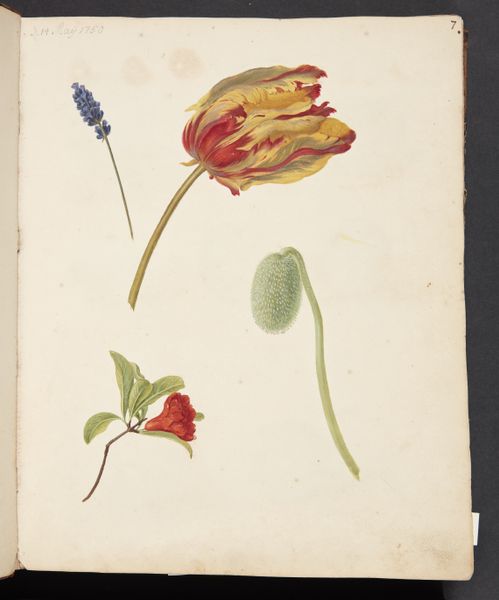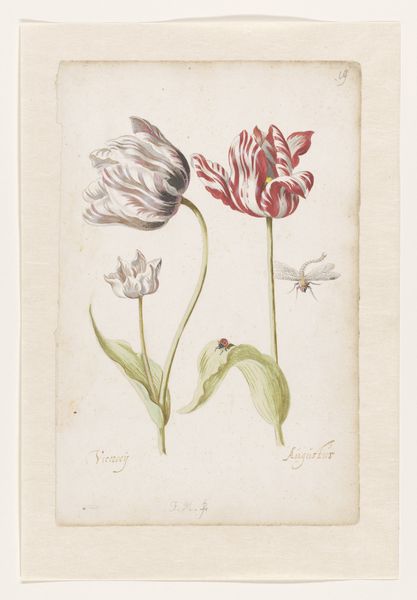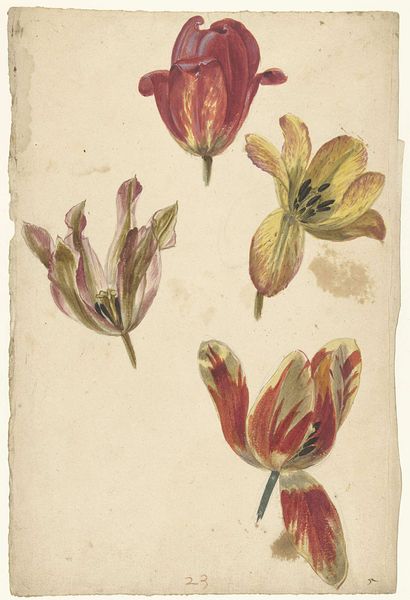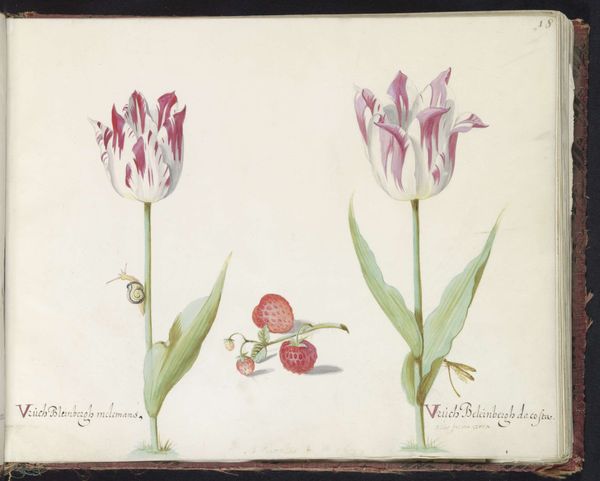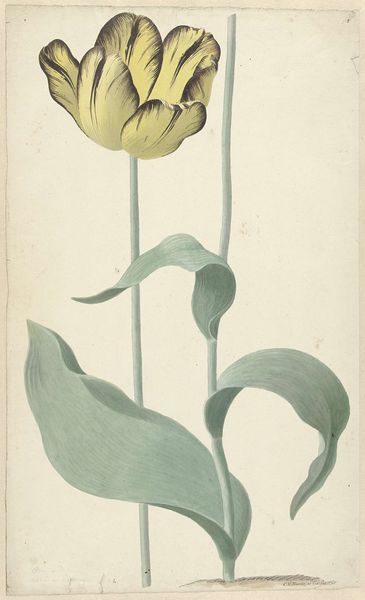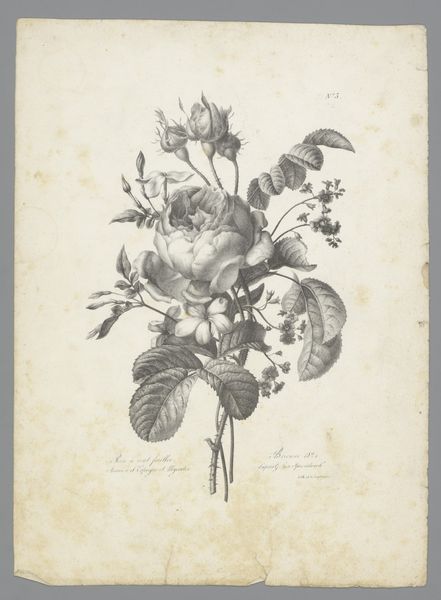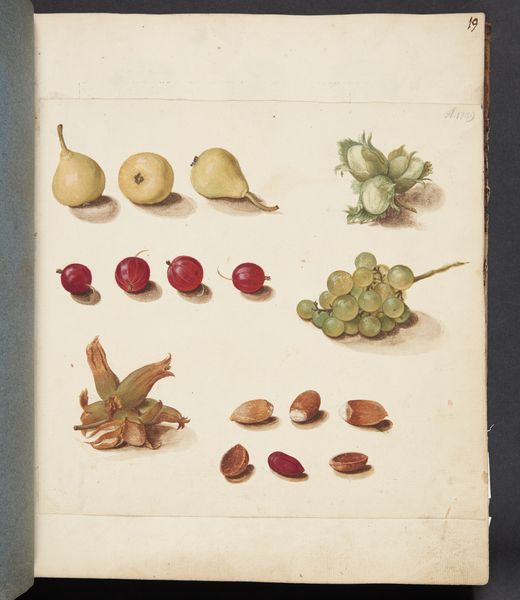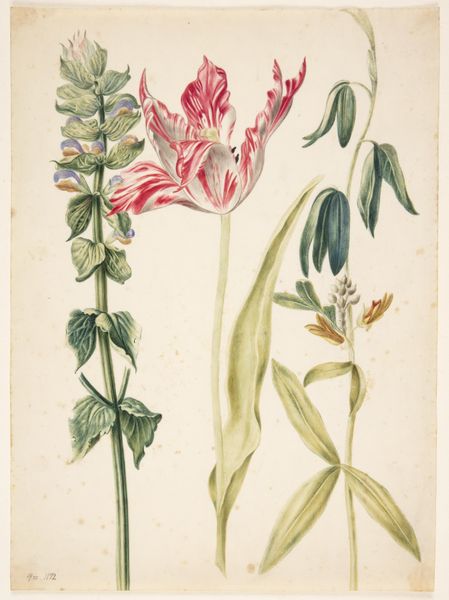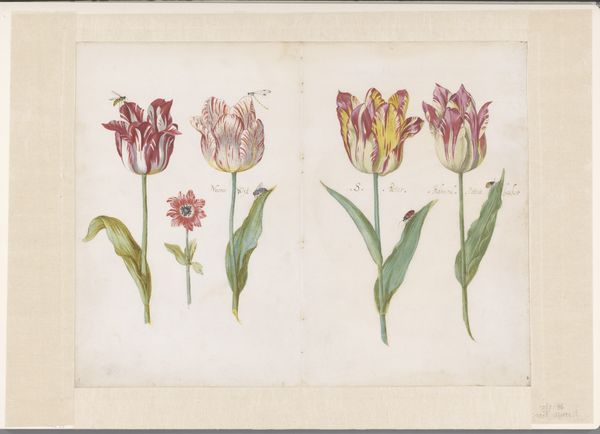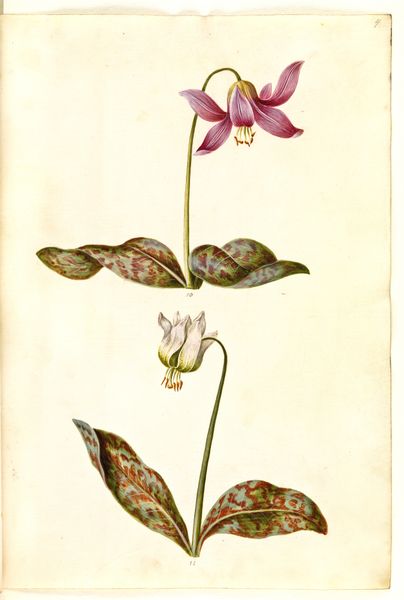
drawing, coloured-pencil, gouache
#
drawing
#
coloured-pencil
#
water colours
#
gouache
#
coloured pencil
#
academic-art
Dimensions: 281 mm (height) x 227 mm (width) (bladmaal)
Editor: Here we have "Studie af blomster og løg," or "Study of flowers and onions," created in 1748 by Johanna Fosie, using gouache and colored pencil. I’m really struck by the contrast between the delicate rendering of the flower petals and the almost blunt depiction of the onion bulbs. What catches your eye about this piece? Curator: The material contrasts definitely pique my interest. Looking at the gouache, the opacity signals a distinct relationship to the pigments used. Where did they source them? Were they local? Also, consider the paper itself: its production, its cost. Was this high-quality paper for the elite, or a more readily available material reflecting a wider access to artistic production? Editor: That's interesting – thinking about the paper and pigment production as part of the art itself. I hadn't considered that. Curator: Exactly. This piece invites us to think about 18th-century material culture. How was this knowledge shared and who had access? This piece can tell us a great deal about gendered labor practices of the era if we can identify who cultivated and sold the pigments. Editor: So, reading this artwork means deciphering the story of its physical making and its place within a larger social framework? Curator: Precisely. We examine the artistic intention within a complex material reality, linking the aesthetic to the economic and social structures of its time. It’s about revealing how art is embedded in, and shaped by, the world around it. Editor: I never thought I could consider how a botanical drawing might shed light on the economics of artistic creation during this period. I'll look closer next time, beyond just the beautiful flower on the surface.
Comments
No comments
Be the first to comment and join the conversation on the ultimate creative platform.
